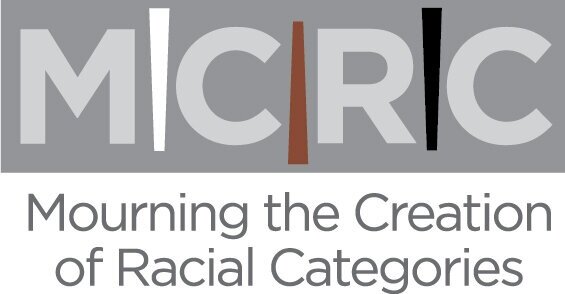Which question does Grouping D answer? (answer key at bottom of page)
1. In the United States, how do we determine who is black and who is white?
2. How did white become the free and black the enslaved?
3. White is “the standard.” What does that mean?
4. Why White?
5. When words are inadequate, how can the arts help us feel the emotions of race?
6. If you do not identify as black or white, where do you fit into the conversation about race?
7. How did white become the pure category and black the contaminating one?
Photographs commissioned by W.E.B. Du Bois and exhibited at the 1900 Paris Exposition “Types of American Negroes.” Selected from the collection of 336 photographs and positioned on color line by Joan Ferrante. Design by Jay Gray.
color line
All the people pictured here were classified as Negroes.* Someone could be legally classified as Negro if they possessed any known African ancestry, even if not evident in their appearance.
*The Black category was referred to as “Negro” in 1900 (when these photographs were taken); we use the language of the time.
One 32nd
How could someone who appears White be legally classified as Black? Depending on the state of residence, a person with 1/4, 1/8, 1/16, 1/32, 1/64, or even 1/128 of so-called Black blood could be legally classified as Black. This image represents the family tree of a person (very bottom) who is theoretically 1/32 Black. White-classified lawmakers used blood fractions to exclude and disqualify people from membership in the White category.
Artwork by Tabitha Kelly Commissioned by the MCRC Project.
Part 1 of Poem by India Sada. Inspired by a letter written by Jibril-Iman McCaster to his son.
Artwork by Sherman Parnell. Poem and artwork commissioned by the MCRC Project.
Letter to My Son (Part 1)
When you were premature and
only 5 ½ lbs
the nurses told me you were not a toy.
They told me you would not break.
Still I carefully held you.
As if your head would
collapse into your body.
As if I’d stretch into
the opening and
wouldn’t be able to reach you—
At three years
we were coloring a different world,
with purple suns
and blue birds.
We could have been red together or pretended to have beige and brown crayons
but you separated us.
You said,
Daddy I am white and you are black.
Who in the hell told you this?
Who made you only white?
Who?
Who didn’t explain I was in there too?
answer key
grouping d answers question 1
In the United States, how do we determine who is black and who is white?




